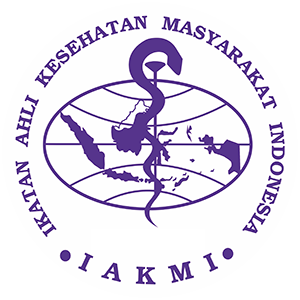PEMANFAATAN DAUN KELOR SEBAGAI UPAYA PENCEGAHAN KEJADIAN STUNTING PADA ANAK USIA PRA SEKOLAH DI TK ‘AISYIYAH 6 PADANG
DOI:
https://doi.org/10.30787/gemassika.v6i1.781Keywords:
Moringa leaves, Prevention, StuntingAbstract
Stunting is a chronic malnutrition problem caused by inadequate nutritional intake for a long time due to feeding that is not in accordance with nutritional needs. Stunting children is an indication of a lack of nutritional intake, both in quantity and quality that is not met.Ignorance of the benefits of Moringa leaves for health, due to lack of information about processing Moringa leaves into pudding for teachers and parents at TK Aisyiyah 6 Padang. Based on the results of the documentation study carried out by the service, the solution that will be offered to partners is education by taking steps to educate about the benefits of Moringa leaves and processing in the form of outreach activities / Counseling to teachers and parents of 'Aisyiyah 6 Padang Kindergarten students, distribution of Moringa plants , as well as processing Moringa leaves into Moringa pudding.From the results of the community service carried out, the following results were obtained: the knowledge of the Kindergarten teacher 'Aisyiyah 6 Padang had a good category (60%) about stunting and the use of Moringa leaves as an effort to prevent stunting in children. This study was a cross sectional study to determine the level of knowledge of TK 'Aisyiyah 6 Padang teachers about stunting and the use of Moringa leaves as an effort to prevent stunting in children. Based on the table above, it can be seen that the knowledge of the Kindergarten teacher 'Aisyiyah 6 Padang has a good category (60%) about stunting and the use of Moringa leaves as an effort to prevent stunting in children.
References
Black RE, Allen,L.H., Bhutta, ZA., Caulfield, LE., de Onis, M., Ezzati, M., Mathers, C., Rivera, J. 2008. Maternal and Child Undernutrition: Global and Regional Exposures and Health Consequences. Lancet. ;371:243-60.
Dewi, K. F., Neneng S,., Yudi, G, Ds. 2016. Pembuatan Cookies dengan Penambahan Tepung Daun Kelor (Moringa oleifera) pada Berbagai Suhu Pemanggangan. Thesis. Fakultas Teknik Unpas.
Krisnandi, AD. 2015. Kelor Super Nutrisi. Blora: Pusat Informasi dan Pengembangan Tanaman Kelor Indonesia.
Osmond C, Barker DJP. 2000. Fetal, Infant, and Childhood Growth are Predictors of Coronary Heart Disease, Diabetes, and Hypertension in Adult Men and Women. Environmental Health Perspectives. 108 (Supplement 3):545-53.
RISKESDAS. 2018. Laporan Hasil Riset Kesehatan Dasar Indonesia Tahun 2018. Jakarta: Departemen Kesehatan RI.
Rosyidah, A. AR dan Rita, I. 2016. Studi tentang Tingkat Kesukaan Responden terhadap Penganekaragaman Lauk Pauk dari Daun Kelor (Moringa oleivera). e-journal Boga, Volume 5, No. 1, Edisi Yudisium Periode Februari 2016, Hal 17-22.
Zakaria, Abdullah, T, S. dan R. H. 2012. Penambahan Tepung Daun Kelor pada Menu Makanan Sehari-hari dalam Upaya Penanggulangan Gizi Kurang pada Anak Balita. Media Gizi Pangan, 13(1), 41–47.
Irwan, Z. 2020. Kandungan Zat Gizi Daun Kelor (Moringa oleifera) Berdasarkan Metode Pengeringan. Jurnal Kesehatan Manarang, Volume 6, Nomor 1, Juli 2020, pp. 69 – 77
Nshimyiryo, A. et al. 2019. Risk Factors for Stunting Among Children Under Five Years : a CrossSectional Population-Based Study In Rwanda Using The 2015 Demographic And Health Survey. 1–10.
Candra, A. 2017. Suplementasi Mikronutrien dan Penanggulangan Malnutrisi pada Anak Usia di Bawah Lima Tahun (balita). Jnh, 5, 8.
Bentian, I. & Rattu, N. M. A. J. M. Faktor Resiko Terjadinya Stunting pada Anak TK di Wilayah Kerja Puskesmas Siloam Tamako Kabupaten Kepulauan Sangihe Propinsi Sulawesi Utara. 1–7 .
Rachmi, C. N., Hunter, C. L., Li, M. & Baur, L. A. 2018. Food choices made by primary carers (mothers/ grandmothers) in West Java, Indonesia. Appetite 130, 84–92.
Lestari, W., Margawati, A. & Rahfiludin, M. Z. 2014. Faktor Risiko Stunting pada Anak Umur 6-24 Bulan Di Kecamatan Penanggalan Kota Subulussalam Provinsi Aceh. 3, 37–45.
Aryastami, N. K. et al. 2017. Low Birth Weight was The Most Dominant Predictor Associated with Stunting Among Children Aged 12–23 Months in Indonesia. BMC Nutr. 3, 16 (2017).
Rahayu, A., Yulidasari, F., Putri, A. O. & Rahman, F. 2015. Riwayat Berat Badan Lahir dengan Kejadian Stunting pada Anak Usia Bawah Dua Tahun. Kesmas Natl. Public Heal. J. 10, 67.
Wellina, W. F., Kartasurya, M. I. & Rahfilludin, M. Z. 2016. Faktor risiko stunting pada anak umur 12- 24 bulan. J. Gizi Indones. 5, 55–61.
Candra, A. & Puruhita, N. 2011. MEDIA MEDIKA. 45, 206–212.
Shine, S., Tadesse, F., Shiferaw, Z., Mideksa, L. & Seifu, W. 2017. Prevalence and Associated Factors of Stunting among 6-59 Months Children in Pastoral Community of Korahay Zone, Somali Regional State, Ethiopia 2016. J. Nutr. Disord. Ther. 07, 1–8.
Tiwari, R., Ausman, L. M. & Agho, K. E. 2014. Determinants of Stunting and Severe Stunting among Under-fives : Evidence from The 2011 Nepal Demographic and Health Survey. 1–15.
Esfarjani, F., Roustaee, R., Mohammadi, F. & Esmaillzadeh, A. 2013. Determinants of stunting in school-aged children of Tehran, Iran. Int. J. Prev. Med. 4, 173–179.












